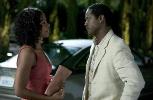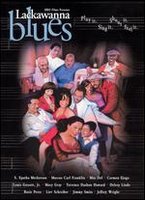My Take on the Movies - THE SENTINEL
The film stars Michael Douglas and Kiefer Sutherland as Secret Service agents defending U.S. President Ballentine (David Rasche of Just Married - 2003) against a threatened assassination plot. The lovely Kim Basinger (The Door in the Floor - 2004) plays First Lady Sarah Ballentine, who has secrets of her own.
Integral to the story itself is the animosity between former friends, Agents Garrison and Breckinridge (Douglas and Sutherland). Integral, as well, is the mutual respect that remains, despite the mistrust. A mole is providing information to terrorists, and the agents’ reciprocal high esteem becomes crucial when a witch hunt is instituted within the top security levels.
This is a modern-day cloak-and-dagger film, in which the cloaks are replaced by black suits, and the daggers are replaced by tech nines. So many of the participants are similarly clad (even the bad guys) that it is difficult at times to visually tell one from another. If that can be considered a drawback, it might be the only one the film possesses.
Douglas (despite his age and weathered countenance) is intense and very believable in this role as a well- trained, incredibly intelligent G-man, who exhibits some minor character flaws. Each actor in the film plays his or her part to perfection, no matter how small. The suspense-driven plot is tightly woven, and the development of the main characters is superb.
Interestingly enough, director Clark Johnson plays a cameo role as a Secret Service agent. His wife is played by Gloria Reuben (Numb3rs). Other noteworthy players are Eva Longoria (Desperate Housewives) as agent Jill Marin, Martin Donovan (CSI and Law and Order) as agent William Montrose, and award-winning actor Chuck Shamata (Cinderella Man - 2005) as Secret Service Director Overbrook. Confidential informant Xavier Walter is played by Raynor Scheine (The Rookie - 2002).
The film is riveting, and explosive in all senses of the word. There are the obligatory chase scenes, but even the chases are of a more cerebral nature, displaying superior levels of competency of both pursuers and the pursued. The film shows off the ultratech nature of the new and improved security forces “keeping us safe from terror.”
This is a thinking person’s film, and one which I quite thoroughly enjoyed. I must say, however, that Hollywood has not quite escaped the typecasting that often allows us to guess the identities of the bad guys before the entire plot is revealed. I won’t hold that against them in this case, and if you like suspense, I highly recommend that you see this fascinating film!
♠ ♠ ♠ ♠ ♠
[© 04/21/2006]














